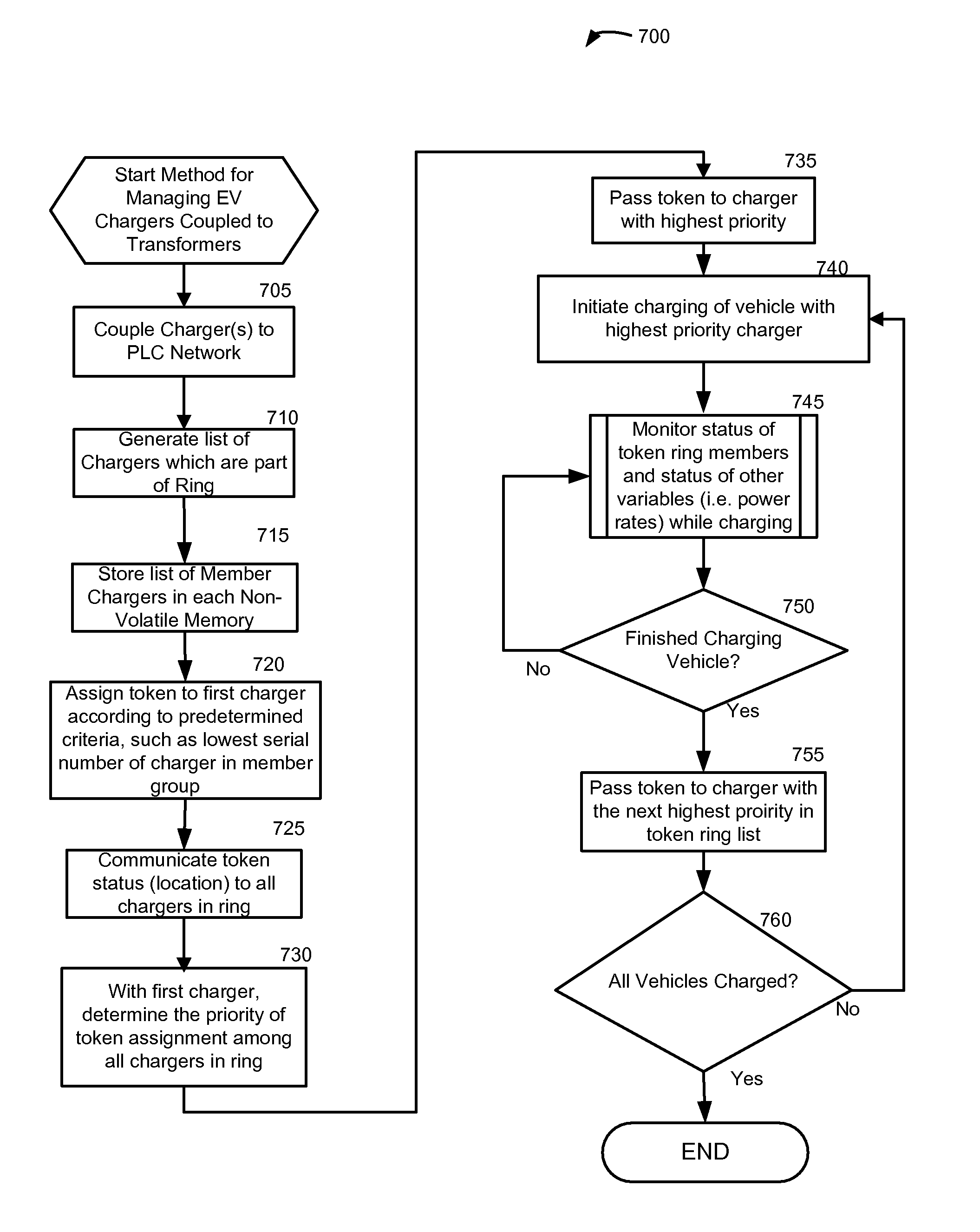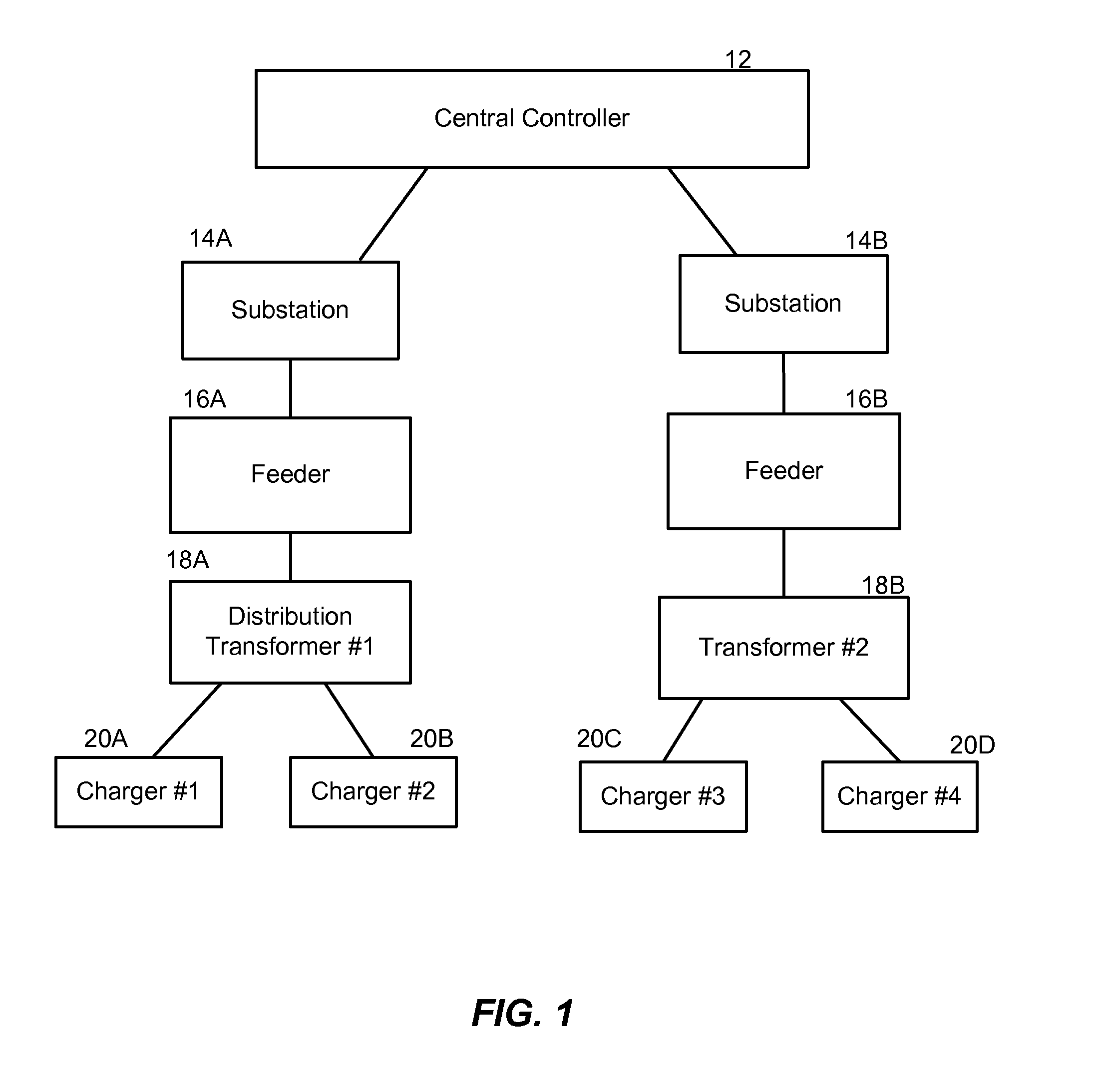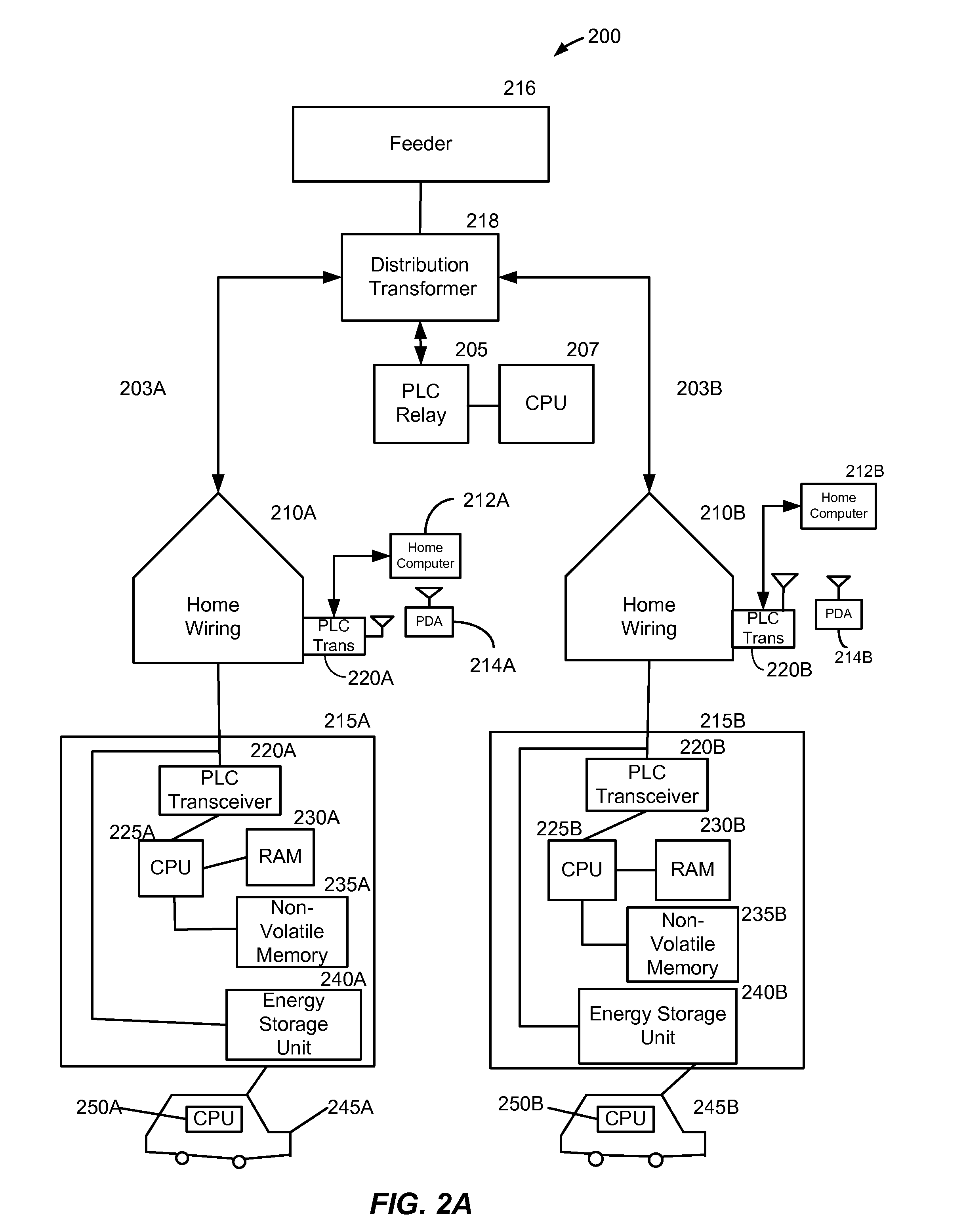Method and system for co-operative charging of electric vehicles
a technology for electric vehicles and charging stations, applied in the field of electric vehicles, can solve the problems that the chargers coupled to the first transformer will likely not be able to detect or communicate with the other chargers who are coupled to the second transformer, and achieve the effect of preventing overloading and avoiding possible failure of the distribution transformer
- Summary
- Abstract
- Description
- Claims
- Application Information
AI Technical Summary
Benefits of technology
Problems solved by technology
Method used
Image
Examples
Embodiment Construction
[0032]A method and system provide for the cooperative and coordinated charging of electric vehicles. By using power line communications, chargers of the electric vehicles who are serviced by the same distribution transformer can form self-contained local area networks due to the nature of power line communications. After the chargers of the electric vehicles are coupled to one another through power line communications, they can form a token ring network. According to this token ring network, a predetermined number of tokens can be assigned within the token ring network for permitting chargers with tokens to charge respective electric vehicles while chargers without tokens must wait until they receive a token to initiate charging. By limiting the number of vehicles who are charging simultaneously, the load on a particular transformer which services several vehicles (households) is restricted to safe levels.
[0033]Turning now to the drawings, in which like reference numerals refer to l...
PUM
 Login to View More
Login to View More Abstract
Description
Claims
Application Information
 Login to View More
Login to View More - R&D
- Intellectual Property
- Life Sciences
- Materials
- Tech Scout
- Unparalleled Data Quality
- Higher Quality Content
- 60% Fewer Hallucinations
Browse by: Latest US Patents, China's latest patents, Technical Efficacy Thesaurus, Application Domain, Technology Topic, Popular Technical Reports.
© 2025 PatSnap. All rights reserved.Legal|Privacy policy|Modern Slavery Act Transparency Statement|Sitemap|About US| Contact US: help@patsnap.com



